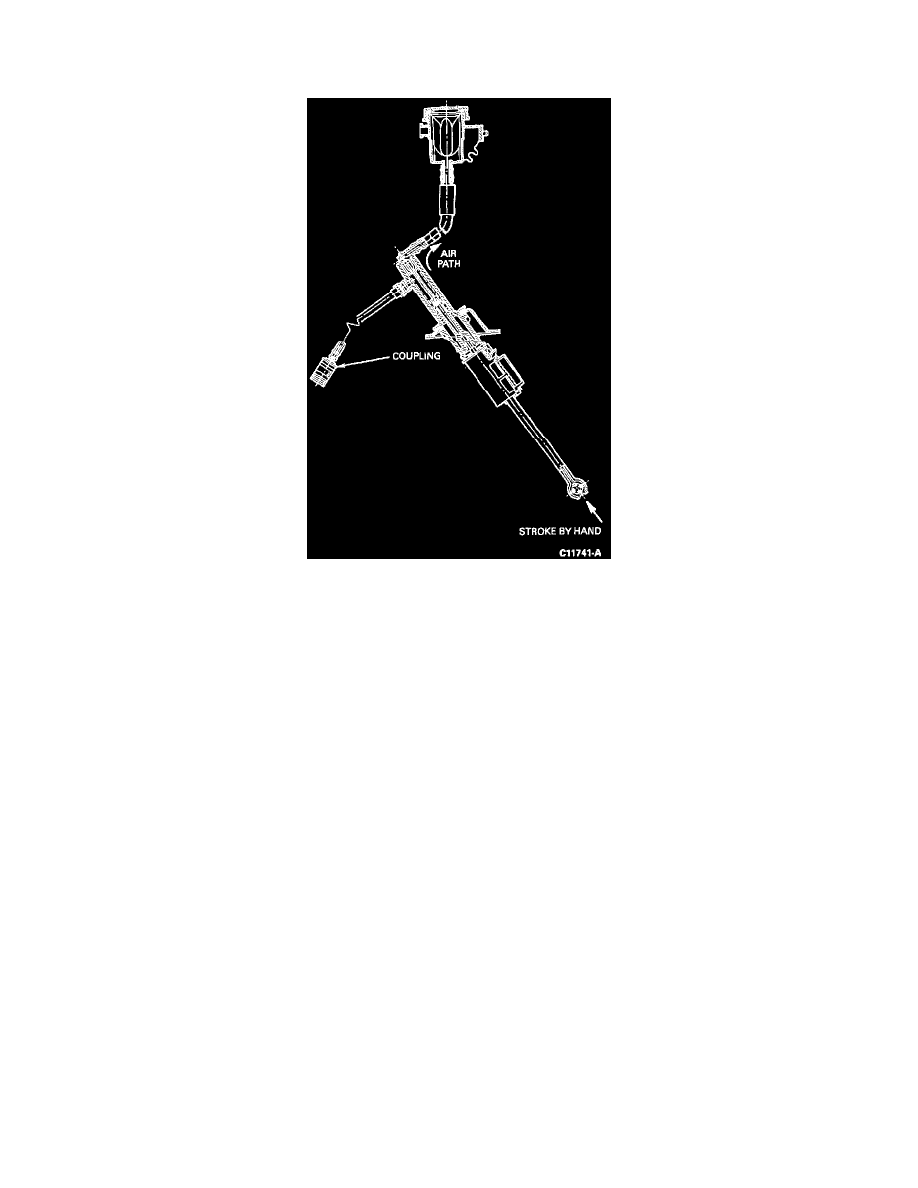Ranger 2WD V6-182 3.0L (1995)

Clutch Master Cylinder: Service and Repair
Clutch Master Cylinder Bench Bleeding
Clutch Master Cylinder
The downward angle of the clutch master cylinder (7A543) makes it difficult for air to escape up into the reservoir. Therefore, if the clutch master
cylinder is removed from the vehicle and bled while held in a vertical orientation (a bench bleed), air can escape much more efficiently.
1. Start with tube and reservoir attached to clutch master cylinder, but system removed from vehicle. Lightly clamp reservoir is a vise.
2. Hold the clutch master cylinder vertically with reservoir feed hose in the highest position on the body.
3. Fill reservoir and extend above clutch master cylinder and make sure the quick connect on clutch line is below the clutch master cylinder.
4. Using a small screwdriver, depress the internal mechanism of the male quick connect coupling to open the valve.
5. Stroke and hold master cylinder push rod.
6. Close quick connect valve.
7. Release master cylinder push rod.
8. Fill reservoir.
9. Repeat Steps 4 through 8 four more times.
10. With the clutch master cylinder still being held with the outlet tube and reservoir feed tube ends high, quick connect closed and the reservoir full,
push the push rod into the body several times quickly to expel any remaining air (if remote reservoir, pinch supply hose with fingers two or three
times to help move air into reservoir).
11. When the movement of the push rod is 4mm (.160 inch) or less when stroked in Step 10 above, the clutch master cylinder may be reinstalled into
the vehicle and coupled to the concentric clutch slave cylinder.
